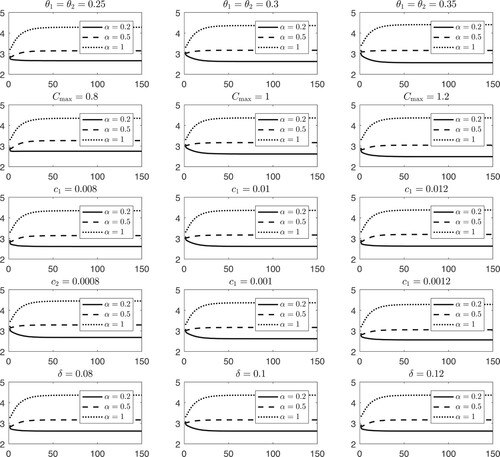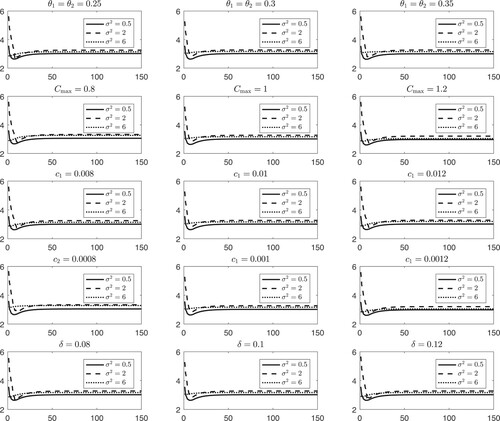Figures & data
Figure 1. Optimal time paths for different levels of the length of the warranty period, ω.
Figure showing the sales , the average time to breakdown
, the reputation
, the potential customers
, and price over time for three different choices of the warranty period, i.e. ω.
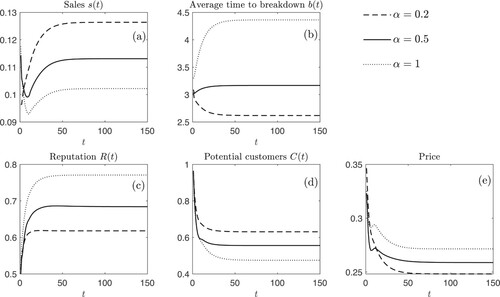
Figure 2. The optimal solution for different levels of the fraction of consumers, α, asking for a new product when their products break down in the warranty period.
Figure showing the sales , the average time to breakdown
, the reputation
, the potential customers
, and price over time for three different choices of the fractions of customers, i.e. α, asking for a new product when their products break down during the warranty period.
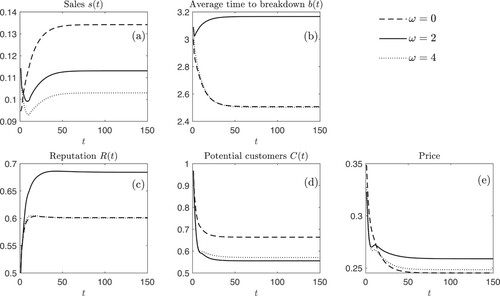
Figure 3. Optimal time paths for different levels of the variance of the product lifetime,
Figure showing the sales , the average time to breakdown
, the reputation
, the potential customers
, and price over time for three different choices of the variance of the product lifetime, i.e.
.
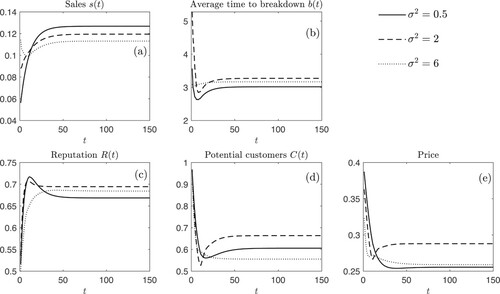
Figure A1. Sensitivity analysis performed with different ω.
Time paths of the average time to breakdown for about
% of the model parameters
,
,
,
, δ for three different choices of the warranty period, i.e. ω.
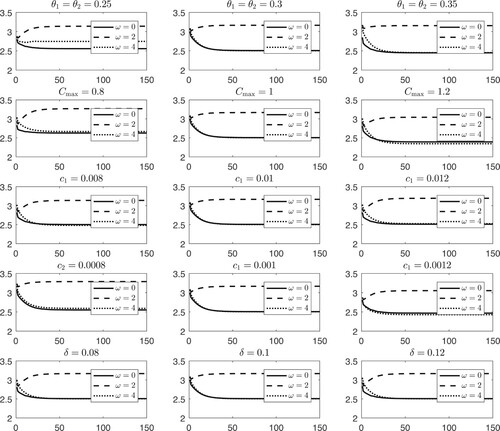
Data availability statement
Data sharing is not applicable to this article as no new data were created or analysed in this study.

